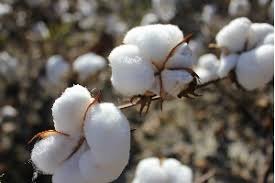
Higher prices will add cost pressure on the value chain, making yarn, fabric and apparel exports less competitive
YarnsandFibers News Bureau 2019-03-25 17:27:00 – MumbaiCotton prices have started rising at a time when the rupee is appreciating. It is a double whammy for textile exporters as it will impact the competitiveness of Indian products in the international market and hit price realisation in rupee terms.
Prices in the cotton futures market has moved up 7 per cent from the low of Rs 19,970 per bale (one bale is 170 kg) in February to Rs 21,360 in March on reports of improving demand from China and domestic mills.
"India has already shipped around 6,00,000 bales to China since October. According to reports, Indian traders have signed contracts to ship 8,00,000 bales of cotton to China as prices have rallied in that country. Moreover, cotton procurement by Cotton Corporation of India at minimum support price also helped prices to cross Rs 21,000 levels," Ritesh Kumar Sahu, Fundamental Analyst - Agri Commodities, Angel Broking.
The cotton output for this year is expected to be lowest in eight years due to delayed and deficient monsoon in some of the key cotton-growing states and lower acreage in some of the southern states.
"We expect the prices will move towards Rs 23,000 levels in next one to two months if El Nino weakens the monsoon this year. Moreover, increased export and off-season demand will also support prices," added Sahu.
Higher prices will add cost pressure on the value chain, making yarn, fabric and apparel exports less competitive. Another major factor that can make Indian products less competitive in the international market is the movement of rupee. A stronger rupee will shrink the revenues of exporters by lowering price realisation.
"The situation has been further aggravated by the appreciating rupee. Both higher cotton prices and the rupee movement are reducing international competitiveness of Indian value-added textile products and would hamper the improving export trend," said Sanjay Jain, Chairman of Confederation of Indian Textile Industry.
Market Intelligence
Ask for free sample Report

experience
Customer Base
dedicated team
Countries Served Worldwide









